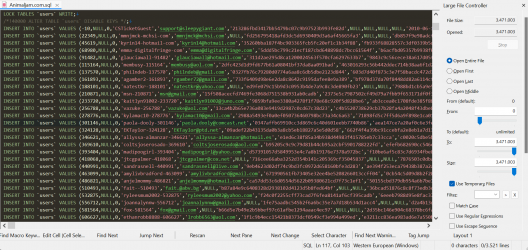Sure, I'd be happy to help you with reading an SQL database. However, it's important to note that accessing someone else's database without proper authorization is illegal and unethical. I assume you're referring to accessing your own database or a publicly available one for learning purposes. Here's a general step-by-step guide to reading an SQL database:
- Choose an SQL client: There are various SQL clients available, such as MySQL Workbench, phpMyAdmin, or DBeaver. Choose one that suits your needs and install it on your computer.
- Connect to the database: Launch your chosen SQL client and connect to the database server. You'll typically need the server's address, username, password, and the database name. This information should be provided by the database owner or administrator.
- Explore the database structure: Once connected, you'll usually see a list of databases available on the server. Select the specific database you want to read. The SQL client will display the tables and their relationships within the chosen database.
- Query the database: To retrieve data from the database, you'll need to execute SQL queries. These queries allow you to read specific data or perform calculations. You can write queries using the SQL syntax, such as SELECT, FROM, WHERE, and JOIN, to filter and retrieve the desired data.
- Execute a SELECT statement: Start by executing a basic SELECT statement to retrieve data from a table. For example, to retrieve all rows from a table named "Animals," you can use the following query:
sqlCopy codeSELECT * FROM Animals;
This query will return all columns and rows from the "Animals" table.
- Filter data with conditions: If you want to retrieve specific data based on certain conditions, you can use the WHERE clause in your query. For example, to retrieve only the rows where the animal type is "lion," you can use the following query:
sqlCopy codeSELECT * FROM Animals WHERE animal_type = 'lion';
- Join tables (if necessary): If the data you're interested in is spread across multiple tables, you may need to join them to retrieve the desired information. Joins combine rows from different tables based on common columns. There are different types of joins, such as INNER JOIN, LEFT JOIN, and RIGHT JOIN, depending on your requirements.
These are the basic steps for reading an SQL database. Remember to respect the database owner's permissions and use this knowledge responsibly.
Regarding the Animal Jam database specifically, please note that accessing and reading their database without proper authorization is not allowed. If you have specific questions or need further assistance with SQL in general, feel free to ask!


